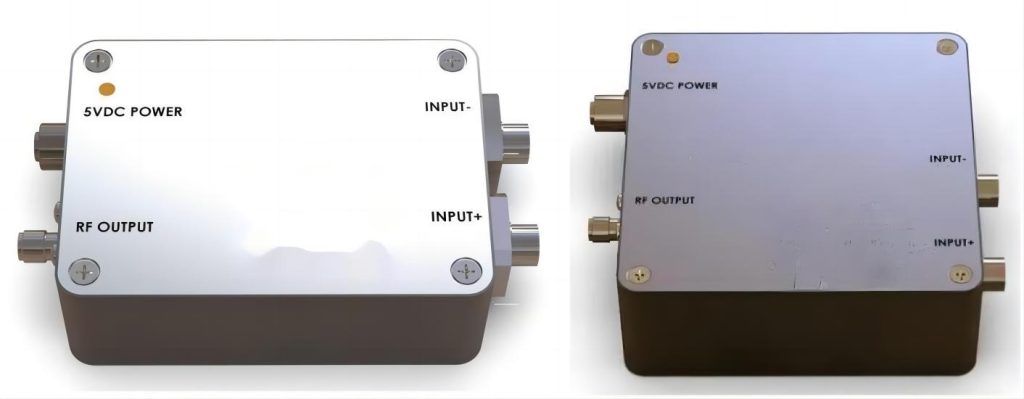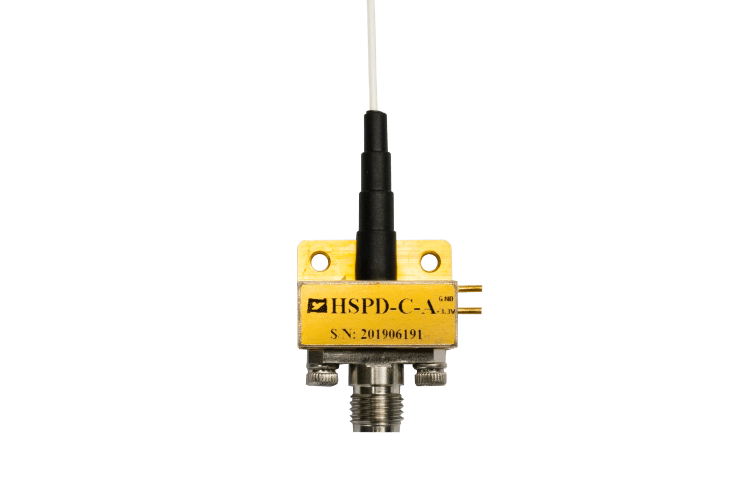Hybrid vs. InGaAs photodetectors: How to Choose the Right One
Photodetectors play an integral role in a wide range of technological applications, particularly in fields like optical communication, medical diagnostics, and environmental monitoring. Among the various types of photodetectors, InGaAs (Indium Gallium Arsenide) photodetectors and hybrid photodetectors are two prominent options, each with their distinct features and advantages. This article explores the applications, product features, and differences between these two technologies, helping you understand which photodetector best suits your needs.

Understanding InGaAs Photodetectors
1. Applications of InGaAs Photodetectors
InGaAs photodetectors are widely used in applications that require high sensitivity to near-infrared light, specifically in the 900-1700 nm wavelength range. Here are some key application areas:
- Optical Communication Systems: InGaAs photodetectors are frequently used in fiber optic communication systems, where the ability to detect light in the near-infrared range is crucial. This is because most fiber optic systems operate at wavelengths around 1550 nm, which falls squarely in the optimal range for InGaAs sensors.
- LIDAR Systems: InGaAs photodetectors are integral to Light Detection and Ranging (LIDAR) systems, commonly used in applications like autonomous driving, atmospheric research, and geographical mapping. LIDAR operates in the near-infrared spectrum, where InGaAs detectors excel in providing fast, accurate detection of reflected laser signals.
- Spectroscopy: InGaAs detectors are often employed in spectroscopic instruments, especially for infrared spectroscopy. Their ability to measure infrared wavelengths with high sensitivity makes them essential for chemical analysis, material identification, and environmental monitoring.
- Medical Diagnostics: In medical imaging and diagnostics, especially in applications like optical coherence tomography (OCT), InGaAs photodetectors enable the capture of images in the near-infrared spectrum. This can provide deeper tissue imaging compared to visible light, aiding in non-invasive medical procedures.
- Infrared Imaging: In military and industrial settings, InGaAs photodetectors are used for infrared imaging. Their sensitivity in the near-infrared range makes them ideal for thermal imaging, night vision, and surveillance systems that need to operate under low-light or nighttime conditions.
2. Product Features of InGaAs Photodetectors
InGaAs photodetectors stand out due to a variety of unique features that make them ideal for applications requiring high performance in the near-infrared spectrum:
- High Sensitivity: One of the standout features of InGaAs photodetectors is their high sensitivity in the 900-1700 nm wavelength range. This makes them ideal for detecting faint signals and low-light conditions, which is critical for applications like spectroscopy and low-light imaging.
- Fast Response Time: InGaAs detectors typically exhibit fast response times, which is essential for high-speed applications such as optical communications and LIDAR systems. The fast response ensures that signals can be processed quickly and accurately.
- Low Dark Current: Dark current refers to the small amount of current that flows through a photodetector even in the absence of light. InGaAs detectors have low dark current, which reduces noise and allows for more precise detection of weak signals, especially in low-light or low-signal environments.
- Optimized for Near-Infrared: Unlike many silicon-based detectors, which are more sensitive to visible light, InGaAs detectors are optimized for the near-infrared spectrum. This makes them the detector of choice for applications specifically targeting this wavelength range.
- Excellent for High-Speed Data Transmission: Given their sensitivity and response times, InGaAs detectors are widely used in high-speed data transmission applications, especially in fiber optic communications, where their performance is unmatched.

Understanding Hybrid Photodetectors
1. Applications of Hybrid Photodetectors
Hybrid photodetectors are more versatile than InGaAs photodetectors in terms of the range of wavelengths they can detect. They combine different materials, such as silicon and InGaAs, to expand their detection range and application scope:
- Multi-Spectral Imaging: Hybrid photodetectors are often used in multi-spectral imaging systems that require detection across a wide range of wavelengths, from visible light to the near-infrared spectrum. This is valuable in fields like agriculture, environmental monitoring, and remote sensing, where different wavelengths provide different insights.
- Biomedical Applications: In healthcare, hybrid photodetectors are used in applications like fluorescence imaging, where sensitivity to both visible and infrared light can improve image clarity and diagnostic accuracy.
- Environmental Monitoring: Hybrid detectors are also used in environmental monitoring systems to detect and measure pollutants, gases, or other chemicals across a broad range of wavelengths. The ability to detect light in both visible and infrared spectra allows for more comprehensive data collection.
- Quantum Communication: Hybrid photodetectors are increasingly important in quantum communication and computing systems, where their ability to detect photons across different wavelengths can facilitate secure communication systems and advanced quantum computing applications.
2. Product Features of Hybrid Photodetectors
Hybrid photodetectors blend the advantages of different materials, offering unique features that suit a broader range of applications:
- Broad Wavelength Range: One of the key advantages of hybrid photodetectors is their ability to detect light across a broader range of wavelengths, from visible light to near-infrared. This makes them more versatile than InGaAs detectors, which are optimized primarily for the near-infrared range.
- Cost-Effective: Hybrid photodetectors tend to be more affordable compared to pure InGaAs detectors. By combining materials like silicon (which is less expensive) with InGaAs, manufacturers can reduce costs while still achieving decent performance in the infrared spectrum.
- High Quantum Efficiency: Hybrid photodetectors often boast high quantum efficiency across a wide spectral range. This means they can convert a higher proportion of incoming photons into electrical signals, improving overall detection efficiency, particularly in multi-wavelength applications.
- Flexible Design: Hybrid detectors can be customized for specific applications by combining different materials. This flexibility allows designers to tailor the detector’s performance to meet the needs of particular industries or technologies.
- Integration with Other Materials: The combination of different materials in hybrid photodetectors can enhance functionality, such as extending the detection range, increasing sensitivity, or improving integration with other systems, such as CMOS technologies for on-chip processing.

Comparison Between InGaAs and Hybrid Photodetectors
When choosing between an InGaAs photodetector and a hybrid photodetector, several key differences must be considered in the following table:
| Feature | InGaAs Photodetector | Hybrid Photodetector |
| Sensitivity | High sensitivity in the near-infrared (900–1700 nm). | Broad spectrum coverage but potentially lower sensitivity in specific ranges. |
| Speed | Typically faster, suitable for high-speed applications like optical communications and LIDAR. | Varies depending on materials; may have slower response times. |
| Cost | More expensive due to the cost of materials and manufacturing processes. | Generally more affordable. |
| Performance | Best suited for applications requiring high precision in the near-infrared range. | Flexible for applications needing broad-spectrum detection but may not match InGaAs in specialized NIR applications. |
How to Choose the Right Photodetectors?
When selecting a photodetector, it’s important to consider the specific requirements of your application. Here’s a general guide to help you choose between InGaAs and hybrid photodetectors:
Choose InGaAs Photodetector If:
- Your application demands high sensitivity in the near-infrared range (900–1700 nm), such as optical communication, LIDAR, or infrared spectroscopy.
- You require fast response times, especially for real-time applications like fiber optic data transmission or LIDAR.
- Low dark current is important to maintain precision in low-light detection environments, such as night vision systems or medical diagnostics.
Choose Hybrid Photodetector If:
- You need a versatile solution that can detect across a broad range of wavelengths, from visible to near-infrared, such as multi-spectral imaging or environmental monitoring.
- Cost is a key consideration, and you are looking for a more affordable solution than InGaAs detectors.
- Your application requires flexible design and integration with other technologies, such as quantum communication systems or biomedical imaging.

Both InGaAs and hybrid photodetectors have their advantages, and the choice between them ultimately depends on your specific application requirements. InGaAs photodetectors excel in applications where near-infrared sensitivity, speed, and precision are paramount, while hybrid photodetectors offer flexibility, broader wavelength detection, and cost-effectiveness for multi-spectral applications. By understanding the strengths and limitations of each technology, you can make an informed decision and select the best photodetector for your needs.








